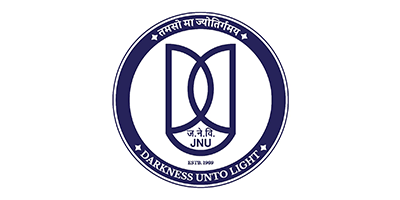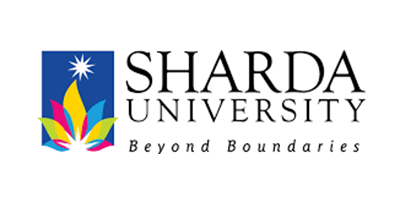From its inception in 1925, the Rashtriya Swayamsevak Sangh (RSS) envisioned a cultural and spiritual
resurgence of Bharat rooted in the ethos of Sewa (selfless service), Samarasata (social harmony),
and Rashtra Nirman (nation-building). Dr. Keshav Baliram Hedgewar, the founder, believed that
rebuilding the nation required not just political freedom but a society deeply awakened to its
civilizational duties. The seed sown in Nagpur eventually grew into a vast banyan tree, sprouting numerous
branches—Matrusansthans and affiliated organizations—across education, health, self-reliance and social.
This is the story of that ideological thread—a journey not of institutions alone, but of ideas, sewa, and
awakening.
The strength of the Rashtriya Swayamsevak Sangh (RSS) lies not just in its ideological clarity or its
vast volunteer network, but in its ability to give rise to an entire ecosystem of selfless
service-oriented institutions—Matrusansthans. These affiliates were not born out of bureaucratic planning;
they germinated from the lived experiences of Swayamsevaks and visionaries who saw a need, responded with
empathy, and built enduring structures of social transformation.
Balasaheb Deshpande, moved by the cultural richness and marginalization of India’s tribal populations,
founded the Vanvasi Kalyan Ashram in Jashpur (now Chhattisgarh) in 1952. Encouraged by Guruji Golwalkar,
his mission was to empower tribal communities through education, healthcare, sports, and spiritual
awareness. What set the Ashram apart was its grassroots approach—training volunteers from within tribal
communities themselves, promoting leadership from within.
Simultaneously, the transformative role of education was taken forward by the foundation of Vidya Bharati
in 1977. Rooted in the experience of Saraswati Shishu Mandirs, which began in Gorakhpur, Vidya Bharati
created a network of over 20,000 schools committed to combining academic excellence with cultural and
spiritual grounding. These schools became temples of Bharatiya identity, where children were nurtured not
only as scholars but as responsible citizens.
The journey of Rashtra Sevika Samiti predates even these institutions. Founded in 1936 by Laxmibai Kelkar
(“Mausiji”), it addressed the often-ignored power of women in national life. Drawing inspiration from the
RSS but creating a unique space for women’s leadership, the Samiti emphasized physical training,
ideological grounding, and community service. Its influence now echoes in various women-led initiatives
across the country.
In the political and philosophical realm, Nanaji Deshmukh founded the Deendayal Research Institute (DRI)
in 1968 to bring Integral Humanism into practice. Renouncing political life, he dedicated himself to
village self-reliance, particularly in Chitrakoot. DRI became a laboratory of sustainable development,
promoting vocational training, organic farming, and social cohesion in line with Bharatiya thought.
In the area of tribal literacy, Dr. Rakesh and Rama Popli, along with Shyamji Gupta, laid the foundation
for Ekal Vidyalaya in the 1980s. Inspired by VHP and RSS’s outreach among Vanvasis, they built a network
of single-teacher schools in remote tribal regions. Today, Ekal Vidyalaya touches over 2.1 million
children in 81,000+ villages—proving that minimalist, community-rooted models can create vast educational
change.
Health remained a vital area of engagement. Arogya Bharati, founded in 2002, created bridges between
Indian knowledge systems and public health practices. With yoga-based interventions, school programs, and
indigenous health promotion, it brought a culturally relevant approach to wellness.
The National Medicos Organisation (NMO), born out of an ABVP convention in 1977, connected healthcare
professionals with the spirit of Sewa. With projects like "One Unit, One Village" and Dhanvantari Yatras,
NMO made healthcare available in the nation’s remotest corners.
The need to empower differently-abled individuals led to the formation of SAKSHAM in 2008. Through
innovations like eye banks, braille libraries, and the massive Netra Kumbh project, SAKSHAM brought
together modern medical techniques and Bharatiya compassion for disability inclusion.
Meanwhile, Bharat Vikas Parishad, founded by Dr. Suraj Prakash in 1963, emphasized development through
cultural revival. From water conservation to community education, BVP carried out thousands of projects
with a deep sense of patriotic service and volunteerism.
At the heart of these initiatives lies Rashtriya Sewa Bharati—a nodal organization that connects over
35,000 grassroots projects, offering training, evaluation, and strategic mentoring to amplify the impact
of Sewa across Bharat. It is the unseen scaffolding that sustains the towering vision of these
institutions.
Conclusion: The Thread That Binds
Each of these institutions is a living expression of the Sangh’s foundational idea—that Bharat will rise
not through statecraft alone but through spiritual and social awakening of its people. Whether working
with tribals, farmers, students, refugees, artisans, or scientists, these organizations have placed Sewa
at the heart of Dharma, and Dharma at the core of Rashtra Nirman.
Together, they form a civilizational ecosystem where ideas mature into action, and action matures into
institutions—not to dominate, but to uplift. This is not merely an organizational journey. It is the
journey of Bharat’s soul rediscovering itself, one project, one volunteer, and one village at a time.



